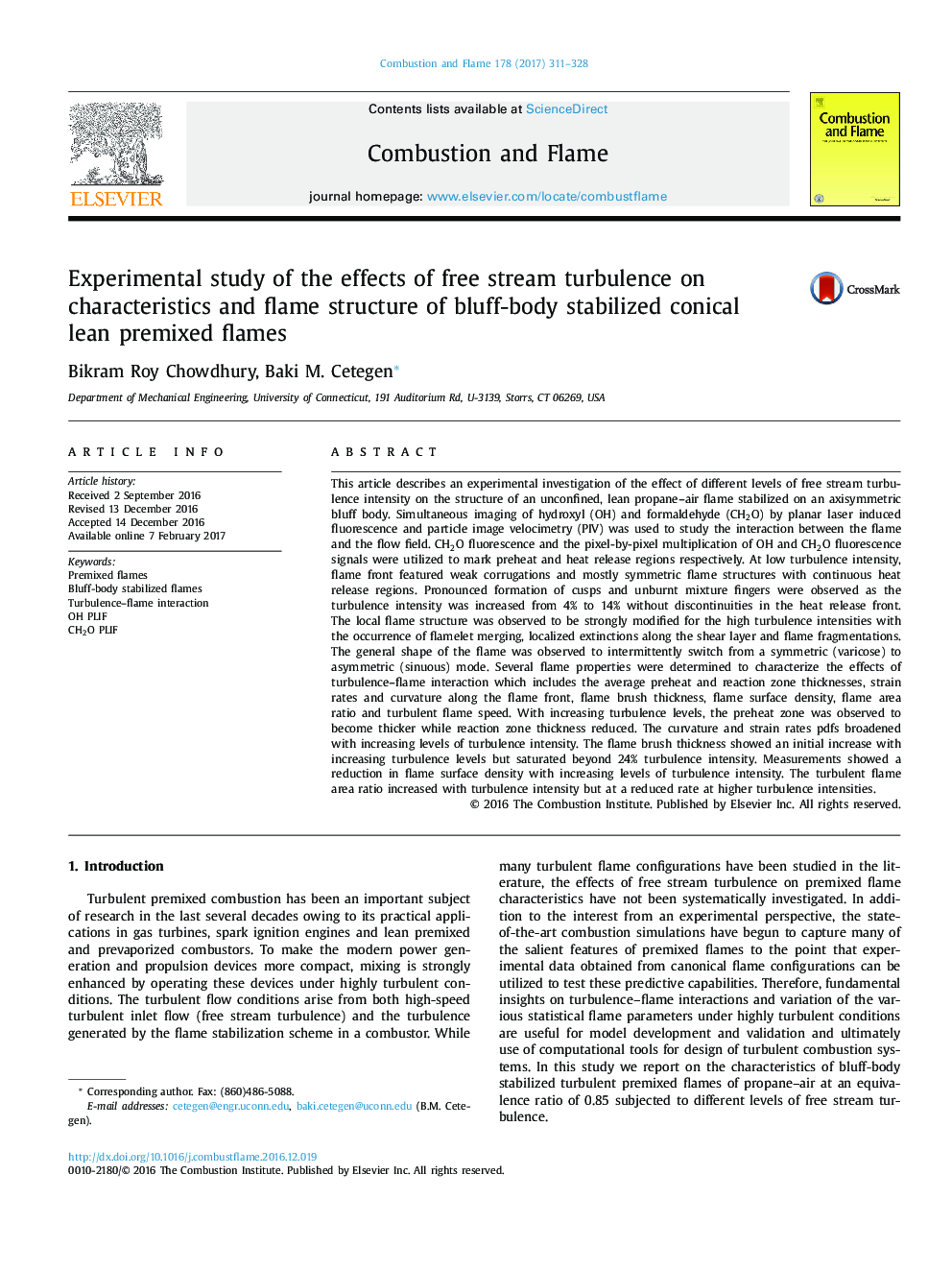| کد مقاله | کد نشریه | سال انتشار | مقاله انگلیسی | نسخه تمام متن |
|---|---|---|---|---|
| 6468604 | 1423559 | 2017 | 18 صفحه PDF | دانلود رایگان |
This article describes an experimental investigation of the effect of different levels of free stream turbulence intensity on the structure of an unconfined, lean propane-air flame stabilized on an axisymmetric bluff body. Simultaneous imaging of hydroxyl (OH) and formaldehyde (CH2O) by planar laser induced fluorescence and particle image velocimetry (PIV) was used to study the interaction between the flame and the flow field. CH2O fluorescence and the pixel-by-pixel multiplication of OH and CH2O fluorescence signals were utilized to mark preheat and heat release regions respectively. At low turbulence intensity, flame front featured weak corrugations and mostly symmetric flame structures with continuous heat release regions. Pronounced formation of cusps and unburnt mixture fingers were observed as the turbulence intensity was increased from 4% to 14% without discontinuities in the heat release front. The local flame structure was observed to be strongly modified for the high turbulence intensities with the occurrence of flamelet merging, localized extinctions along the shear layer and flame fragmentations. The general shape of the flame was observed to intermittently switch from a symmetric (varicose) to asymmetric (sinuous) mode. Several flame properties were determined to characterize the effects of turbulence-flame interaction which includes the average preheat and reaction zone thicknesses, strain rates and curvature along the flame front, flame brush thickness, flame surface density, flame area ratio and turbulent flame speed. With increasing turbulence levels, the preheat zone was observed to become thicker while reaction zone thickness reduced. The curvature and strain rates pdfs broadened with increasing levels of turbulence intensity. The flame brush thickness showed an initial increase with increasing turbulence levels but saturated beyond 24% turbulence intensity. Measurements showed a reduction in flame surface density with increasing levels of turbulence intensity. The turbulent flame area ratio increased with turbulence intensity but at a reduced rate at higher turbulence intensities.
Journal: Combustion and Flame - Volume 178, April 2017, Pages 311-328
